At a glance, the action thriller Con Air may not seem connected to the Cooper’s Hill Cheese-Rolling and Wake. The latter is an annual contest in Gloucester, England where contestants chase an 8lb wheel of cheese downhill. Much to the amusement of spectators, the steep incline results in most runners tripping into a long tumbling descent. First to the bottom (or whoever miraculously catches the dangerously fast wheel) is the winner, and awarded with said wheel, not to mention bragging rights. All in all, therein lies the essence of Con Air, a race to the bottom full of violent spectacle that awards solid cheese in the end.
Discussing such a film, it may seem strange mentioning Samuel Taylor Coleridge, author of “The Rime of the Ancient Mariner”. However, the 19th century poet coined a notion critical to the enjoyment of this late 20th century blockbuster. In his Biographia Literaria, written in 1817, Coleridge put forth the concept of suspension of disbelief. The idea that although the audience knows they’re engaging with fiction they’ll willfully chose to believe the premise thanks to a poetic faith. That’s why viewers accept Nicolas Cage as not only a southern badass but a dangerous person. When he says, “Put the bunny down,” you best put the bunny down.

Oddly enough, it’s no less absurd than watching performers from the Royal Shakespeare Company walk around an empty, darkened stage pretending it’s a castle, battlefield, etc. Suspension of disbelief is an essential element in the consumption of any fiction. The point being that Con Air is all about expectation. Those who go in anticipating a five-star fancy feast only to find themselves handed greasy fast food are bound to be disappointed. But that’s more their fault than the film’s.
Con Air erupted across silver screens twenty-five years ago. Since opening day, it’s been a popcorn and beer affair never meant to be taken seriously. In fact, the movie revels without pretention in its action-packed premise. All that matters is the gears tick smoothly towards the next extravagant explosion, bullet storm, or beatdown.
Released on June 6th 1997, Con Air is the story of Cameron Poe played by Nicolas Cage. The simple synopsis is that a blue-collar southern fried soldier ends up in prison after defending his pregnant wife from redneck drunks. Paroled years later, he hitches a ride home on an airplane that happens to be full of the worst criminals in the whole penal system. Unfortunately, these borderline supervillains manage to take over the plane, and it falls on Poe to ensure they don’t get away.

Con Air is essentially a plate of tater tots smothered in nacho fixings with a pint of Jäger to wash it all down. This isn’t intended as an intellectual exploration of any concept. It’s a quickie in the bathroom stall during dollar beer night, and anyone expecting anything more has never enjoyed the gluttonous glory of deep-fried butter. Con Air is junk food but that doesn’t make it bad. Although, that doesn’t make it genius either.
This movie came into the world thanks to Jerry Bruckheimer. He rose to prominence producing such features as Top Gun, Flash Dance, and Beverly Hills Cop. In the early 90s, he and production partner Don Simpson struggled to maintain the success that marked their 80s films. Performing far below expectations, the box office for Days of Thunder (1990) killed a magnificent deal with Paramount Pictures. Then the financial failure of The Ref (1994) seemed another sign the duo might be fading stars. However, a string of successes starting with Bad Boys (1994) turned the tide. By the time the team released the smash hit The Rock in 1996, their reputation was restored as Hollywood hit makers. Riding high, Bruckheimer set sights on Con Air.
Written by Scott Rosenberg, the story is based somewhat on reality. In 1995, law enforcement agencies merged efforts to create the Justice Prisoner and Alien Transportation System. When Rosenberg learned about this flight service transporting prisoners by air, he finagled a ride along. According to him, “I spent three days on the Con Air plane with convicts… It was very unsettling, and a bit terrifying. But I knew the story would make great fun.”
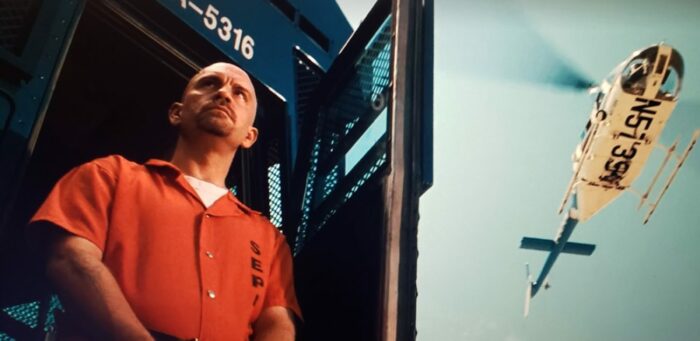
Unfortunately, Don Simpson’s struggles with drug addiction would not only break up his partnership with Bruckheimer but result in his death in January 1996. The New York Times article recounting Simpson’s career and demise contains an interesting quote by Bruckheimer. He said, “We pigeonholed ourselves into making these blockbuster movies… let’s just do what we started to do when we came here: make movies we like.”
An increasing self-awareness marked a lot of nineties feature films. Movies like Last Action Hero (1993) and Scream (1996) utilized audiences’ awareness of the formulaic conventions driving a lot of genre flicks. Scream, for instance, gets away with being a by-the-numbers slasher story by pointing out it’s a by-the-numbers slasher story, criticizing itself before the audience can. Bruckheimer productions, however, went in a far less meta direction.
Instead of deconstructing a genre, Bruckheimer and company leaned into the absurdity inherent in every action film. Thrilling as such flicks can be, no reasonable person believes the fantastical accomplishments of the tough as nails individual fixing problems through heroic bloodshed. Yet, that said, the audience is already aware the kind of movie they’re watching. As such, filmmakers expect them to suspend disbelief accordingly, allowing for surreal levels of stylized violence.
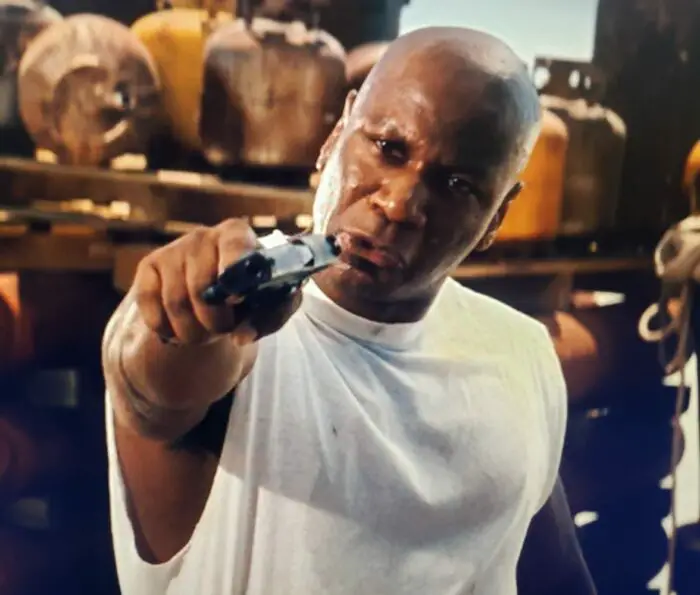
It’s the reverse of ironic self-awareness, where the purpose isn’t to sarcastically roll eyes with the audience but rather, embrace the artifice of a secondary reality wherein extreme action casually defies conventional reality. In other words, expectation fuels a poetic faith in the film — it’s just a movie, so accept the unbelievable. The result is a flick like Con Air that never takes itself seriously while gleefully embracing extremes.
In an interview with AMFM Magazine, director Simon West said he “couldn’t really not put comedy in it” and the movie is all the better because of it. Helming his first feature film, by his own admission, West didn’t know anything about doing action. His experience came primarily from shooting commercials and music videos, most notably the internet’s favorite bait-and-switch vid, Rick Astley’s “Never Gonna Give You Up”.
Con Air, consequently, doesn’t have a lot of flair. The camera setup is very utilitarian, and though exceedingly competent, results in a degree of predictability. Setups become obvious in several situations leaving the audience just waiting for the payoff. The camera lingers briefly on an exposed, broken pipe, cueing viewers to anticipate an impending impaling. These calls to attention turn the action into fireworks displays, figuratively and literally, robbing them of tension and surprise even though they do serve sweet eye candy.

That’s not to say there aren’t other more pressing problems with the film. Con Air carries the baggage of bygone ideas of acceptability. More than a few instances of casual racism pepper the dialogue and portrayals. The film doesn’t simply fail the Bechdel test, it writes its own F with its ink dipped penis. One way of looking at Con Air could even be honorable white guy must protect the world and women folk from the evil white genius controlling a horde of murderous minorities.
It’s a real shame too considering the plethora of performers available. For instance, Guard Bishop, played by Rachel Ticotin, could’ve easily been a more dynamic character. Ticotin held her own in action films such as Total Recall (1990) as well as delivering solid performances in Falling Down (1993) and enriching the voice of Maria Chavez on the Gargoyles tv series. Unfortunately, in Con Air, she’s relegated to little more than damsel in distress.
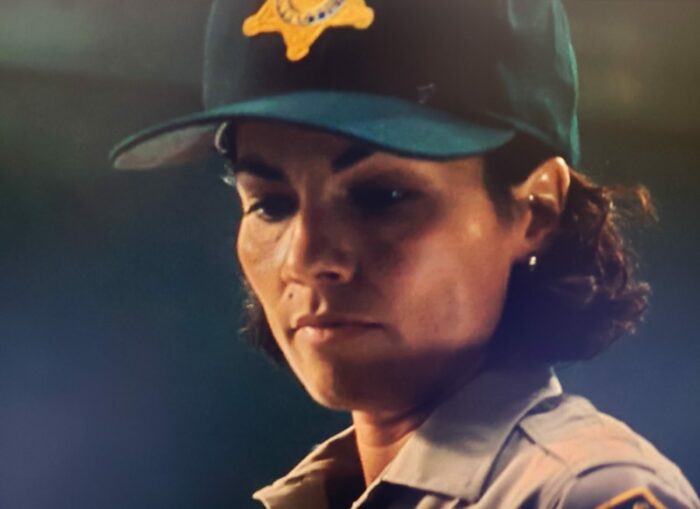
Ticotin is just the tip of the iceberg in an amazing ensemble. The sheer amount of talent, including awarding winning performers, is almost a gimmick in and of itself. The cast includes Ving Rhames, John Cusack, Colm Meaney, Monica Potter, Mykelti Williamson, Danny Trejo, John Malkovich, and most memorably, Steve Buscemi as the serial killer Garland Greene. Each could hold their own with a more refined script, though I doubt there isn’t a scene Buscemi wouldn’t still steal.
From the moment he arrives, shackled in a getup reminiscent of Hannibal Lecter, he captures audience attention. The hideousness of his exploits terrifies even the most dangerous of the other convicts. Yet, despite being a veritable bogeyman, as the movie unfolds, he almost seems like the least dangerous person on the flight, and his casual condemnation of the other villains is as comical as it is accurate.
The fact the film applies such sly juxtapositions shows filmmakers could’ve gone in cleverer directions—one more coat of paint would’ve perfected. Believe it or not, Nicolas Cage even seemed to think so. He insisted on two changes to the film which offer not only some more characterization for protagonist Poe but add one of Con Air’s most memorable aspects.

The first is a montage while our protagonist is in prison. Voiceover narration details the pen pal poppa relationship with his growing daughter while visuals inform myriad ways he stoically passes the time. Director Simon West, according to Den of Geek, added the section at the behest of Nicolas Cage, who felt it would help flesh out the character more. Cage then made one more crucial suggestion, the bunny.
The stuffed bunny truly is at the heart of Con Air, setting up one of its most quotable lines. There is nothing more gleefully absurd than the wondrous joy of Cage drawling in what’s supposed to be a dangerous growl, “Put the bunny down.” I have never seen this movie without someone cheering when he says it.
Cage has reportedly said, “I’m proud of that. The whole bunny thing was mine… I wanted that to be symbolic of all the pain and loss he had gone through.”
“Put the bunny down,” easily ranks alongside some of Hollywood’s most memorable lines. It’s one of those quotes that is instantly recognizable by anyone who’s seen the film. Furthermore, it encapsulates the boundless absurdity of the film, especially when characters get killed because they didn’t put the bunny down.

If it seems as if something like Con Air could never be made today, look no further than The Fast and Furious franchise. Both films embrace their absurdity as if to wink and nod at the audience saying, “What were you expecting, Noel Coward?” And while Con Air’s socially unsophisticated elements are best left in the past, the film’s shameless action indulgences are a fantastic example for a certain kind of movie maker. Where it fails socially is an opportunity for future movie makers to do better, but where it excels embracing surreal degrees of action opens a window for any future film to fly through.
Con Air received its fair share of criticism. Although, much of the negative reviews read like critics stopped paying attention at some point, often implying they arrived ready to lambast the flick from the first frame. Peter Travers writing for Rolling Stone penned the opinion, “Con Air has all the signs of a hit. And that’s depressing.” Echoing that sentiment, Mike LaSalle wrote for SFGATE that Con Air “really might be the dismal future of movies.”
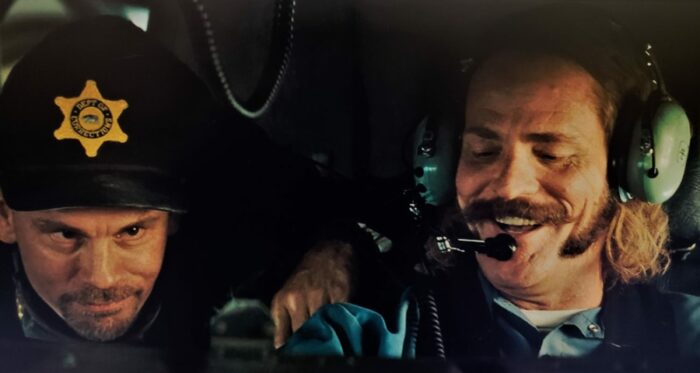
Folks born after a certain era don’t know what a rare treat it was to get a celebrated, award-winning thespian like John Malkovich to play a B-movie villain like Cyrus “The Virus”. Comic book films practically have such performers lining up to portray space wizards, mermaid pirates, and alien guttertrash. Nowadays chart-topping musicians love to play film composer, but around 1997, getting progressive rock icon Trevor Rabin to produce the bombastic score for Con Air was unheard of. This movie was an amalgamation of elements that have become common place for big budget action adventures. However, twenty-five years ago, it was a unique spectacle, and opened the window for what we take for granted today.
Yeah, Con Air isn’t perfect. There’s plenty that wouldn’t pass muster with a modern audience, which is a good sign of contemporary times, but it did help pave the path for more ambitiously absurd action flicks. That may not seem like a positive to some folks, who probably prefer ortolan to popcorn, but it shouldn’t seem as insulting as some want it to be. It’s all about what people expect to see when they escape through the silver screen.


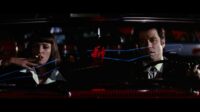

Nice piece Jay. Love that the director did the Rick Astley video! Yeah, it’s a fun movie – they can’t all be “Citizen Kane” right?